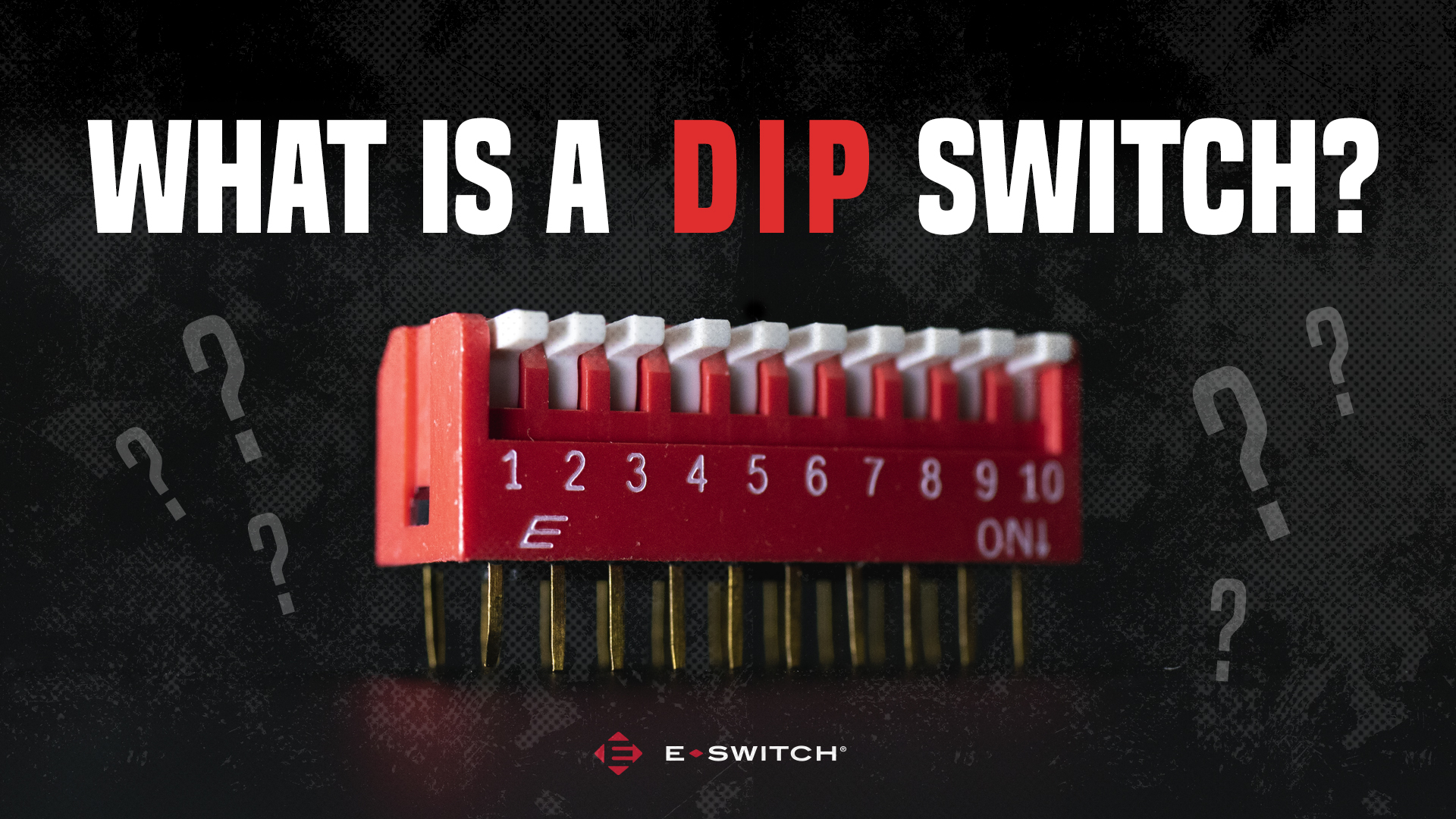What are DIP Switches?
DIP is short for “Dual In-line Package.” A DIP switch is designed to be mounted on printed circuit boards and is commonly used to customize the behavior of an electronic device for specific situations. It’s a type of manual electric switch that contains a group of switches within a single package.
How Do They Work?
DIP switch refers to a set of electrical switches packaged in a small box or housing, which are arranged in a line or circle (rotary DIP). The function is to provide a range of electrical inputs to an electronic device based on the position of the individual switches within the line or circle.
Each switch can either be in an “on” or “off” position, allowing for the customization of an electronic device’s behavior for specific situations. When the switch is on, it completes an electrical circuit, and when it’s off, the circuit remains open. By setting the switches in a specific combination, you could be selecting an address, enabling certain features or adjusting parameters. That’s why these switches are commonly used in configuring hardware, setting memory addresses and selecting options on a circuit board.
Pros & Cons
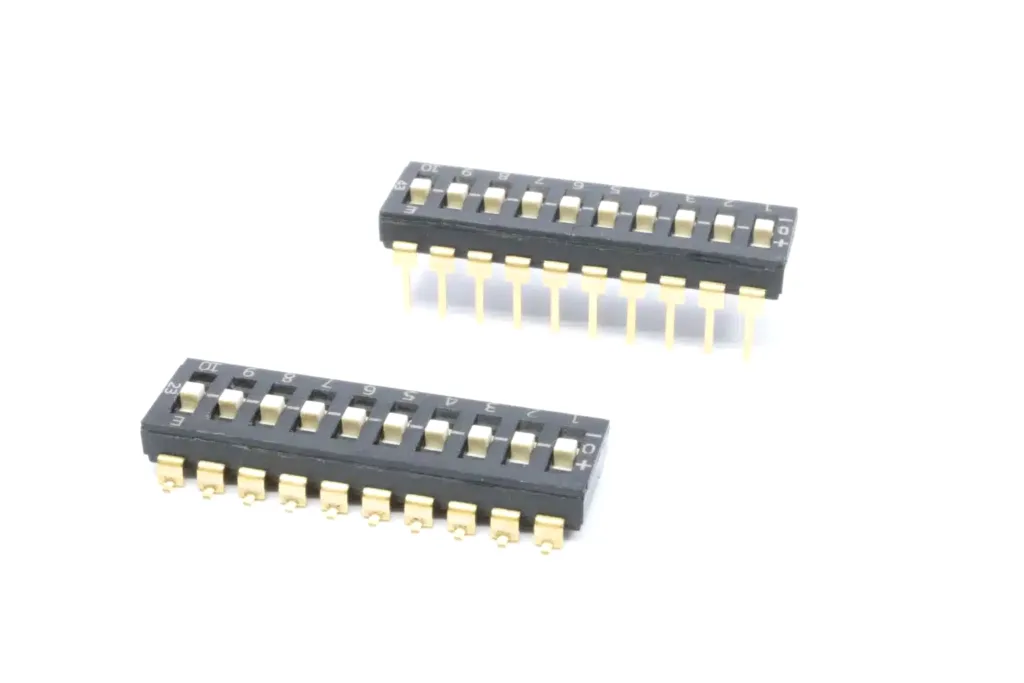
DIP switches are an alternative to jumper blocks. Their main advantages are the ability to quickly change positions and the fact there are no parts to lose. DIP switches are simple, flexible and low cost.
In recent times, DIP switches have lessened in popularity due to the rise of easily customizable software configurations.
However, they are still used for a variety of functions, especially within industrial equipment. They provide an inexpensive solution for circuit design with the convenience of checking their configurations without the system being turned on.
DIP switches are also used in devices to prevent interference since they set a different radio frequency or address for each transmitter/receiver pair, so multiple units can be installed without unintentionally controlling each other.
Common Uses
Some common uses for DIP switches include:
- PC Expansion Cards
- Industrial Equipment
- Motherboards
- Arcade Game Machines
- Garage Door Openers
- Remote Controls
E-Switch Products
E-Switch offers many DIP switches, take a look at our selection below (including links to data sheets and series configurators for immediate purchasing).
KAG Series
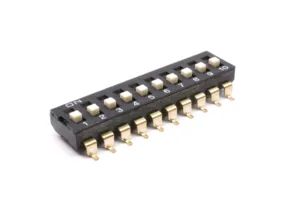
- Electrical rating:
- Switch: 25mA @ 24VDC; Carry: 100mA @ 50VDC
- Surface mount (SMT) design
- 1, 2, 4, 8 or 10 positions; SPST each position
- Gull wing termination
- Extended or recessed actuator; top tape seal option
- 0.100″ (2.54mm) Full pitch
- 0.9mm travel each direction
- Gold contact material
- -40°C to +105°C operating temperature
KAC Series
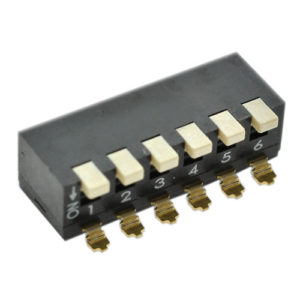
- Electrical rating:
- Switch: 25mA @ 24VDC; Carry: 100mA @ 50VDC
- Through hole right angle or surface mount right angle (SMT) design
- 2, 4, 6, 8 or 10 positions; SPST each position
- Extended actuator
- Splayed or gull wing termination
- 0.100″ (2.54mm) Full pitch
- Low profile, 5mm height off PCB
- 20 degrees nominal travel
- Gold contact material
- -20°C to +85°C operating temperature
KAE Series
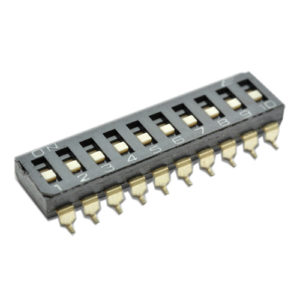
- Electrical rating:
- Switch: 25mA @ 24VDC; Carry: 100mA @ 50VDC
- Through hole or surface mount (SMT) design
- 1 to 12 positions; SPST each position
- Splayed, straight or gull wing termination options
- Extended or recessed actuator; top tape seal option
- 0.100″ (2.54mm) Full pitch
- 1.0mm nominal travel
- Gold contact material
- -20°C to +85°C operating temperature
KAD Series

- Electrical rating:
- Switch: 25mA @ 24VDC; Carry: 100mA @ 50VDC
- Through hole or surface mount (SMT) design
- Tri-state DIP switch, featuring “high output,” “low output” and “high impedance” or “OFF” functionality at multiple positions
- 4, 5, 8, 9 or 10 positions; SPDT each position
- Extended or recessed actuator; top tape seal option
- Straight pin or gull wing termination
- 0.100″ (2.54mm) Full pitch
- Low profile, 3.7mm height off PCB
- 0.8mm travel in each direction
- Gold contact material
- -20°C to +85°C operating temperature
KAN Series
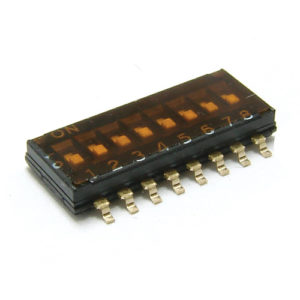
- Electrical rating:
- Switch: 25mA @ 24VDC; Carry: 100mA @ 50VDC
- Surface mount (SMT) design
- 2, 4, 6, 8 or 10 positions; SPST each position
- Gull wing termination
- Recessed actuator; top tape seal option
- 0.050″ (1.27mm) Half pitch
- Gold contact material
- -40°C to +85°C operating temperature
KAP Series
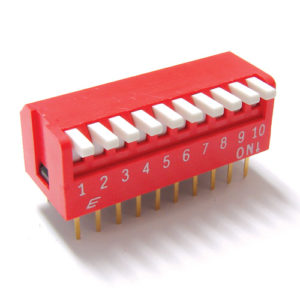
- Electrical rating:
- Switch: 25mA @ 24VDC; Carry: 100mA @ 50VDC
- Through hole right angle mounting design
- 2 to 12 positions; SPST each position
- Straight PC pin termination
- Extended or recessed actuator; top tape seal option
- 0.100″ (2.54mm) Full pitch
- 2.0mm travel typical
- Gold contact material
- -20°C to +85°C operating temperature
- Top-side “OFF” or top-side “ON” available
KAS Series
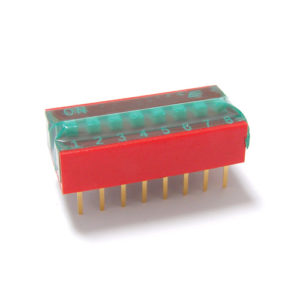
- Electrical rating:
- Switch: 25mA @ 24VDC; Carry: 100mA @ 50VDC
- Through hole vertical or right angle mounting design
- 1 to 12 positions; SPST each position
- PC pin vertical or right angle termination options
- Extended or recessed actuator; top tape seal option
- 0.100″ (2.54mm) Full pitch
- 2.0mm travel typical
- Gold contact material
- -40°C to +85°C operating temperature
